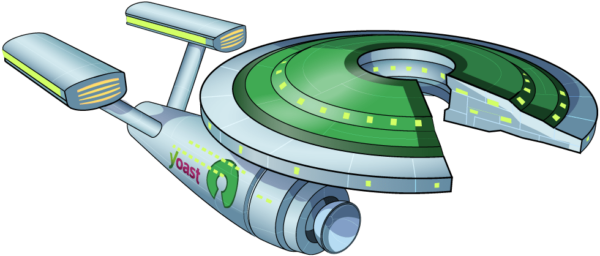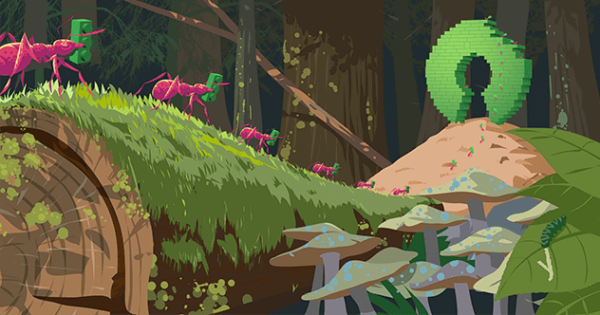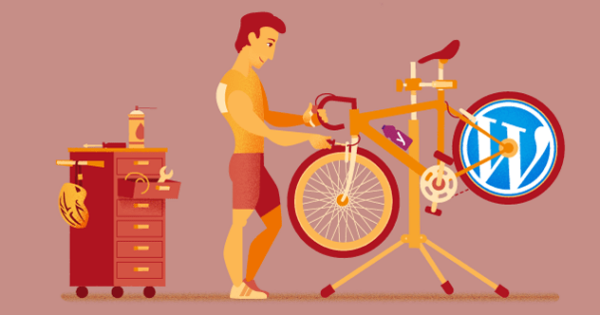The open source glossary
A11Y/Accessibility
In short, A11Y means accessibility and is what is known as a numeronym. Unlike an acronym, numbers are used in place of letters to shorten the term. Accessibility (A11Y) is a measure of how accessible a computer system is to everyone, including those with disabilities or impairments.
Author
In the case of open source, an author is someone who wrote (and with it contributed) a certain piece of software.
Branches
Branching is the duplication of an object (such as a source code file or directory tree) so that modifications can occur in parallel along multiple branches. Branches are also known as trees, streams or codelines. Branching also generally implies the ability to later merge changes back onto the parent branch.
Browser
A browser (a.k.a. web browser) is a software application for accessing information on the web. When a user requests a web page from a particular website, the browser retrieves the necessary content from a web server and displays the page on the screen.
Bug
A software bug is an error, flaw or fault in a computer program or system that causes it to produce an incorrect or unexpected result, or to behave in unintended ways.
CMS
CMS is short for content management system. This is a software application you can use to manage the creation and modification of digital content. To give an example: WordPress is a content management system.
Codebase
A codebase is a collection of source code used to build a particular software system, component or application.
Code of conduct
A code of conduct is a set of rules outlining the norms, rules, and responsibilities or proper practices of an individual party or an organisation. In the case of open source there’s a code of conduct for contributors named the Contributor Covenant, which is used in prominent software projects.
Commit
A commit adds the latest changes to (part of) the source code to the repository, making these changes part of the head revision of the repository. These commits are kept in the repository indefinitely. Thus, when other users do an update (or checkout) from the repository, they will receive the latest committed version, unless they specify they wish to retrieve a previous version of the source code in the repository.
Community
A community is a group of people that share a particular characteristic, attitude, belief or interest. People in a community can live in the same place (a country, village, town or neighbourhood), but can also come together in a virtual space through communication platforms.
Contribute
To contribute means that someone gives something (their time, money, ideas or something else) in order to help achieve a goal or provide something together with others.
Contributor
A contributor is someone who contributes to something. In the case of an open source contributor that someone contributes to the advancement of an open source project. Now of course this can mean contributing code, but someone can also contribute in other ways, such as working on branding or proper documentation.
Contributor day
Contributor day is an event where volunteers come together to contribute to WordPress, collaborate with new and existing contributors and learn about the different ways to get involved in the project.
Fork
In software engineering, a fork (or project fork) happens when a developer takes a copy of source code from a software package and starts independent development on it, creating a distinct and separate piece of software.
GitHub
GitHub is a website that provides hosting for software development version control, and does so using Git. Git simplifies the process of working with other people and makes it easy to collaborate on projects.
Hackathon
A hackathon (also known as hack day, hackfest or codefest) is an event in which developers, designers, project managers, and other domain experts collaborate intensively on software projects to create functioning software or hardware by the end of the event.
Maintainer
In open source, a software maintainer or package maintainer is usually one or more people who build source code into a binary package for distribution, commit patches or organize code in a source repository.
Make WordPress
Make WordPress is a group of WordPress enthusiasts who contribute to WordPress in different ways. Everyone who wants to contribute to making WordPress even better is welcome to join.
Open source
Open source software (OSS) is any computer software that’s distributed with its source code available for modifications. This means it usually includes a license for programmers to change the software in any way they choose, so they can improve it and publish their version back to the community.
Owner
While the question of who owns an open source project can be tricky if not made clear by licensing, there are many ways in which you can do that — MIT, Apache 2.0, and GPLv3 being the most popular open source licenses.
Patch
A patch is a small piece of software that includes a set of changes to a computer program to update, fix or improve it. It’s mainly used to fix bugs, such as vulnerabilities in security or improvements in usability.
Polyglots
The polyglots team is responsible for ensuring WordPress is available in dozens of languages and many more regions. It’s a big job, and they need help from native speakers of many languages to make it possible.
Pull-request
A pull request (PR) is a method of submitting contributions to an open development project. It occurs when a developer asks for changes committed to an external repository to be considered for inclusion in a project’s main repository after the peer review.
README
A README file contains information about other files in a directory or archive of software. It is usually a plain text file called READ.ME (or something similar) and they often contain instructions, additional help and details about patches or updates.
Repository
A software repository (or repo for short) refers to a central place where data is stored and maintained. A repository can be a place where multiple databases or files are located for distribution over a network, or it can be a location that is directly accessible to the user without having to travel across a network.
(local) server
A server is a computer program or device that provides functionality for other programs or devices called “clients” — like a browser, for instance. They can provide functionalities such as sharing data or resources among multiple clients. A local server is one that runs an application on the same machine as the client application and is commonly not connected to any network. A website runs on a web server that’s connected to the internet.
Slack (meeting)
Slack is a business communication platform that is widely used in the WordPress community. It’s designed to support online collaboration between people, through channels, direct messaging, sharing of files and lots of other possible add-ins.
Trac
Trac is a web-based software project management and bug or issue tracking system. It provides an integrated Wiki, an interface to version control systems, and a number of convenient ways to stay on top of events and changes within a project. 
;
User Guidelines
WordPress wants its users to be free to do what they want. But there are a few categories of content and behavior that they won’t permit because they consider them harmful to the community. That’s why they’ve put together a set of guidelines for users.
WordCamp
A WordCamp is an informal and community-organized event that is put together by WordPress users. WordCamps happen all over the world and bring together everyone involved with WordPress, from casual users to core developers.
WordPress
WordPress is the most popular free and open source content management system worldwide. Thanks to its usability and variety of themes and plugins, WordPress is very user-friendly and is used by more than 60 million websites right now.











